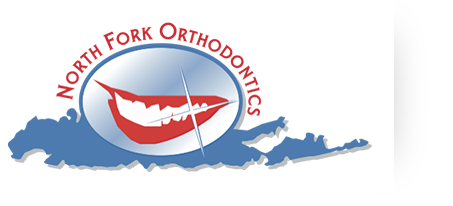For All Ages
Orthodontic care for children
Although there is no set rule, the American Association of Orthodontists (AAO) suggests that children begin orthodontic screening around age seven.
Because most children have a combination of baby and adult teeth by this age, an orthodontist can identify and correct dental and jaw abnormalities without surgery.
It is possible to delay the extraction of permanent teeth, minimize speech impairments such as thumb sucking and stuttering, and help align your child’s permanent teeth with early orthodontic therapy with an orthodontist.
It may be difficult for parents to determine if their child needs orthodontic treatment or not. If your child displays any of the following signs, orthodontic treatment may be necessary:
- Early or late loss of baby teeth
- A hard time chewing or biting food
- Mouth breathing
- Finger or thumb sucking
- Crowded, misplaced, or blocked teeth
- Jaws that pop or make sounds when opening and closing
- Teeth that come together abnormally, or do not come together at all
- Jaws and teeth that are not proportionate to the rest of the face
- Crowded front teeth around age seven or eight
Please call our office to schedule an appointment for an orthodontic evaluation. Start your child’s dental care right now for a beautiful, healthy smile that lasts a lifetime.
Teenage Orthodontics
Whatever orthodontics-related query you may have, you’ve found the correct resource here.
The words “You need braces!” are dreaded by every adolescent.
Braces! What do you have left to do at this point?
At this time, there’s no reason to panic! In the case of braces, you should not be afraid to acquire them. As a consequence, braces are now more fun to wear and less bothersome than they used to be because of the wide range of options available.
Can you tell me how long I have to wear braces?
Braces straightening time is greatly influenced by the factors listed below:
- Early orthodontic treatment enables orthodontists to monitor the development of a child’s jaw and provide recommendations for further treatment if necessary. Not every patient is a candidate for early orthodontic treatment, and delaying treatment may be suggested in certain instances.
- How long it takes to complete treatment depends on the amount of correction required to address a specific issue. Each patient’s response to treatment is unique. Depending on the patient, treatment might take anywhere from one year to two years to complete.
- It’s all about you! Your desire to wear the braces prescribed by your orthodontist has a major influence on how long it takes to finish your orthodontic treatment. It’s important to keep in mind that taking good care of your braces and other orthodontic equipment will expedite your therapy.
You’re in for a treat!
You may choose from a wide choice of braces at our office. Among the most popular options:
- Ceramic braces
- Invisible braces
- Lingual braces
- Traditional metal braces
People your age are often seen wearing orthodontic braces. In the past, braces may have had a bad name, but today’s braces make it easier to look and feel great. To set up a consultation, please call our office.
Adults Can Get Braces Too
No longer are only kids and teens able to get orthodontic care. The American Association of Orthodontists says that one out of every five people who get braces is over the age of 21. Adults go to therapy for a number of reasons, but the most common ones are to improve their health and appearance. Adults all over the world are taking advantage of the chance to get orthodontic care, and you can do the same.
Adults might go to an orthodontist for a number of reasons, such as:
- A bad bite or malocclusion, causing teeth to fit together incorrectly
- Teeth are crowded or spaced apart, possibly causing tooth decay or gum disease
- Abnormal jaw pain, or pressure that is caused by crooked teeth
- Desire for a healthier mouth and a more confident smile
Adult Treatment Options
The notion of wearing metal braces is enough to put many individuals off getting orthodontic treatment. As a consequence, there are currently various orthodontic treatment choices that are both beautiful and appealing. Braces come in a variety of shapes and sizes:
- Clear braces
- Ceramic braces
- Self-ligating braces
- Lingual (behind the tooth) braces
- Invisible braces
- Traditional metal braces
The difference between adult and pediatric and adolescent orthodontics:
When treating adults, adolescents, and teenagers, keep in mind that their jawbones are still growing. Orthognathic surgery to straighten the jawbones may be an option for people whose bones have stopped developing. Among the many variations are:
Adults are more susceptible to gum recession or bone loss as a result of gingivitis or severe periodontal disease than children. Gum disease is less frequent in those who have straighter teeth.
When teeth are worn down or lost, they may shift into new positions that may only be repaired by orthodontic treatment. When one or more teeth are lost, the remaining teeth move and tilt, increasing the risk of gum disease and a terrible bite.
Many individuals got orthodontic treatment as children or teenagers, but many never finished. This is a common problem. They choose to continue their orthodontic treatment as adults in order to get the healthy, attractive smile they have always sought.
Adults and children need different levels of attention and care, which we take into account in our work. We’ll work with you to ensure you get the best treatment possible, and we’ll do all we can to meet your requirements.
What are the benefits of using braces?
Correctly aligned teeth are simpler to clean with floss and brushing, and they may help avoid other health problems.
Because of the benefits of a beautiful, straight smile, orthodontic treatment may increase your self-esteem and enable you to smile freely.
Leaving a mouth untreated may lead to long-term health problems that can cost you more money in the long run.
To learn more about the advantages of adult orthodontics, please contact our clinic. We recognize your time constraints and will do everything possible to make each visit as convenient as possible.
Early Intervention
What is the difference between early and regular orthodontic treatment, and why could my child need early treatment? Why is it important for my child’s health to begin therapy as soon as possible?
To name a few, children who get orthodontic treatment at an early age have many questions. The American Association of Orthodontists (AAO) recommends that youngsters as young as seven see an orthodontist. At this session, the orthodontist will determine whether or not your child needs orthodontic treatment.
When youngsters are eight or nine years old, they begin early therapy (also known as Phase One) (Phase Two will begin around age 11 or older). Certain biting issues, such as an underbite, may be prevented or reversed with early treatment. As a result, if therapy begins early enough, extractions will be less likely in the future.
Early orthodontic treatment may help your child in the following ways:
- Early or late tooth loss in infants (your child should typically start losing teeth around age five, and will have all permanent teeth around age 13)
- You have difficulty biting or chewing.
- Breathing via the mouth
- Your child may still be sucking his or her thumb after the age of five.
- Speech difficulty
- Top and bottom teeth stretch out from each other
- Teeth that do not fit together normally
- When your child opens or closes his or her mouth, the jaw moves (crossbites)
What are the most common causes of orthodontic problems, and why is it important to start treatment as soon as possible?
Teeth alignment and bite problems can be caused by trauma to the mouth, losing teeth too early or too late in life, or sucking on your thumb. All of these things can lead to orthodontic problems like crowding and overcrowding.
By the time they are in their late teens, most kids have lost all of their baby teeth and their jaw bones have stopped growing. People in their thirties and forties may have to wait longer for orthodontic treatment and may need a tooth extraction or oral surgery. If a child gets orthodontic care as a child, they might not need it as an adult. This could lower the risk of having to have teeth pulled or surgery in the future.
If your child is between 7 and 8 years old and seems to need orthodontic care or if your family dentist has suggested a trip to the orthodontist, please call our office to make an appointment. Our professionals will do an initial evaluation of your child and talk to you about the best ways to care for your child’s smile while keeping you in mind.







